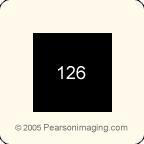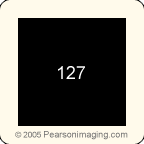About Film Formats - Slides, Negatives, & Transparencies
Over the years there have been many film formats, and so it can be confusing to determine what type of materials you have. This page will help you figure that out and explain the differences. Since there are many film formats we cannot explain all types, but will cover the more common ones; 110 (sub-miniature format), APS, 35mm (standard format), 120 (medium format), and 4"x5" (large format). Information on additional film formats can be found here.
There are a few basic definitions that are crucial in differentiating between your materials. When we refer to these terms this is what we mean...
Film - Strictly speaking, film is a photographic material that consists of a celluloid base covered with a photographic emulsion. It is used to make negatives or transparencies and can be contained in a roll, cassette, or cartridge. Larger film usually comes in sheets. When we say film we are referring to processed/developed slides, negatives, or transparencies.
Film Format - The size of the film.
Frame - One still image. A frame can be single or part of a filmstrip containing multiple frames. All our scanning is priced per frame, not per filmstrip.
Filmstrip - A piece of photographic film that contains one or more photographic frames.
Transparency - An unmounted positive photographic image on film. A transparency can be color or black & white.
Slide - A single transparency frame that has been placed in a slide mount. In other words, a slide is a mounted transparency. There are different types of slides but the most common is a 35mm slide.
Negative - The inverse of a positive image. Blacks appear white and whites appear black if you view a neg on a light box. Negative film comes in all formats and can be color or black and white.
Matted - One frame that has been taped/attached to a piece of board. Any frame can be matted but medium format transparencies are most common. Matts usually fold over like a book and contain a window for viewing the image.
DPI - Dots per inch. Refers to print resolution, or how many dots a printer can produce in one inch. 300dpi is standard photo quality. Higher DPI = better quality, lower DPI = lower quality.
SPI - Samples per inch. A scanner reproduces images by taking "samples" across an image, and so a scanner will take 4000 samples in a 4000spi scan. SPI is basically the technical term for the resolution the scanner uses when you are in the process of scanning or taking samples.
PPI - Pixels per inch. This is how we measure how many pixels are displayed in a digital image, the result of the scan. A 4000spi scan results in a 4000ppi digital image. Both Adobe and Nikon measure digital images as PPI and we do too.
The basic film formats are sub-miniature, APS, standard, medium, and large format. Please note that the images below are NOT to scale and this list only covers the more common formats.
110 "Instamatic" Format

This is a 110 filmstrip that contains 4 13mm x 17mm frames. The 110 instamatic film format comes in cartridges and was introduced by Kodak in 1972. 110 film is exactly 16mm wide.
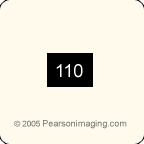
Here's what a 110 slide in a 2" x 2" mount looks like. The viewable frame size is about 12mm x 16mm. If you happen to have the small 110 30mm x 30mm mount slides, you will need to buy 50mm x 50mm adapters and place the small slide in them so they can be scanned; one adapter for every slide.
Disc Film
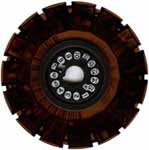
This is disc film. The disc contains 15 8mm x 11mm frames. This film was introduced by Kodak in 1982 but it didn't catch on. Probably because the small frames produced grainy unsharp images. We currently do not scan disc film.
APS - Advanced Photo System

This is an APS cassette. One unique aspect of APS film is that it's always contained in the cassette. This allows you to change rolls mid-roll without damaging the film. APS cassettes typically contain 15, 25, or 40 frames. APS is negative film and comes in both color and black and white. Inside the cassette the film is 23mm wide and the frames are 30.2mm x 16.7mm in size (don't open the cassette or it will be ruined!). We discontinued APS scanning service 1/08.
135 (35mm) Standard Format

This is a standard 35mm filmstrip that contains 4 36mm x 24mm frames. The frame number is printed on the top and/or bottom of the frame. 135 format is exactly 35mm wide. This format was introduced in 1934 and quickly became the most popular format.
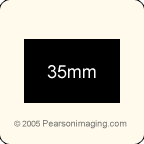
Here's what a standard 35mm slide in a 2" x 2" mount looks like. The frame size (black area) is usually about 34mm x 23mm, although it does vary by manufacturer and slide age.
126 "Instamatic" Format

This is a 126 filmstrip that contains 4 28mm x 28mm frames. The frame number is printed at the bottom of the frame. 126 film is actually 35mm wide and so it can be confused with 35mm if you don't look carefully. Like 110 format, 126 film comes in cartridges for easy loading; it was introduced in 1963.
Here's what a 126 slide in a 2" x 2" mount looks like. The viewable area is usually about 26.5mm x 26.5mm. Now due to the aperture of the scanner (36.8mm x 25.1mm) about 1.45mm will be cropped from the top and bottom of these slides. Move your mouse over the picture to see the area that will get cropped out (red).
127 Format
Here's what a 127 "super slide" in a 2" x 2" mount looks like. The viewable area is about 40mm x 40mm. Unfortunately, a significant portion cannot be scanned due to the aperture of the scanner. Move your mouse over the picture to see the area that will get cropped out (red).
120 Medium Format
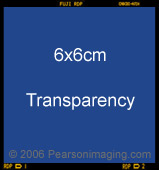
120 medium format contains a range of frame sizes; 6x4.5cm, 6x6cm, 6x7cm, 6x8cm, and 6x9cm. The most common being the 6x6cm size shown at the left. This actually has a frame size of 56mm x 56mm. The frame number is printed at the top or bottom and this format is 60mm wide. This format was introduced in 1901 and comes on a roll. Also related are 220 and 620 format. The difference is that these formats allow for more exposures per roll.
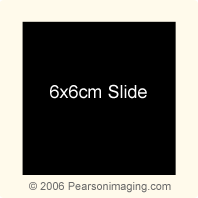
This is a medium format 6x6cm slide in a 70mm x 70mm mount. We can scan these slides and also 6x4.5cm, 6x7cm, 6x8cm, and 6x9cm medium format slides.
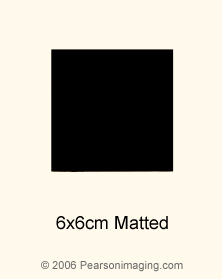
Here's a matted 6x6cm frame. Please remove film from mats before sending it in for scanning. We do not recommend this type of mounting because adhesives can easily become permanently stuck to the film, thereby damaging it.
4 x 5 Inch Large Format
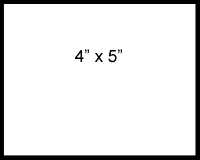
4" x 5" large format is sheet film. You would think this format would be 4x5 inches in size, but it's not. The sheet size is usually about 100mm x 125mm and the frame size is roughly 95mm x 120mm. We discontinued 4x5 inch scanning service 7/11.

